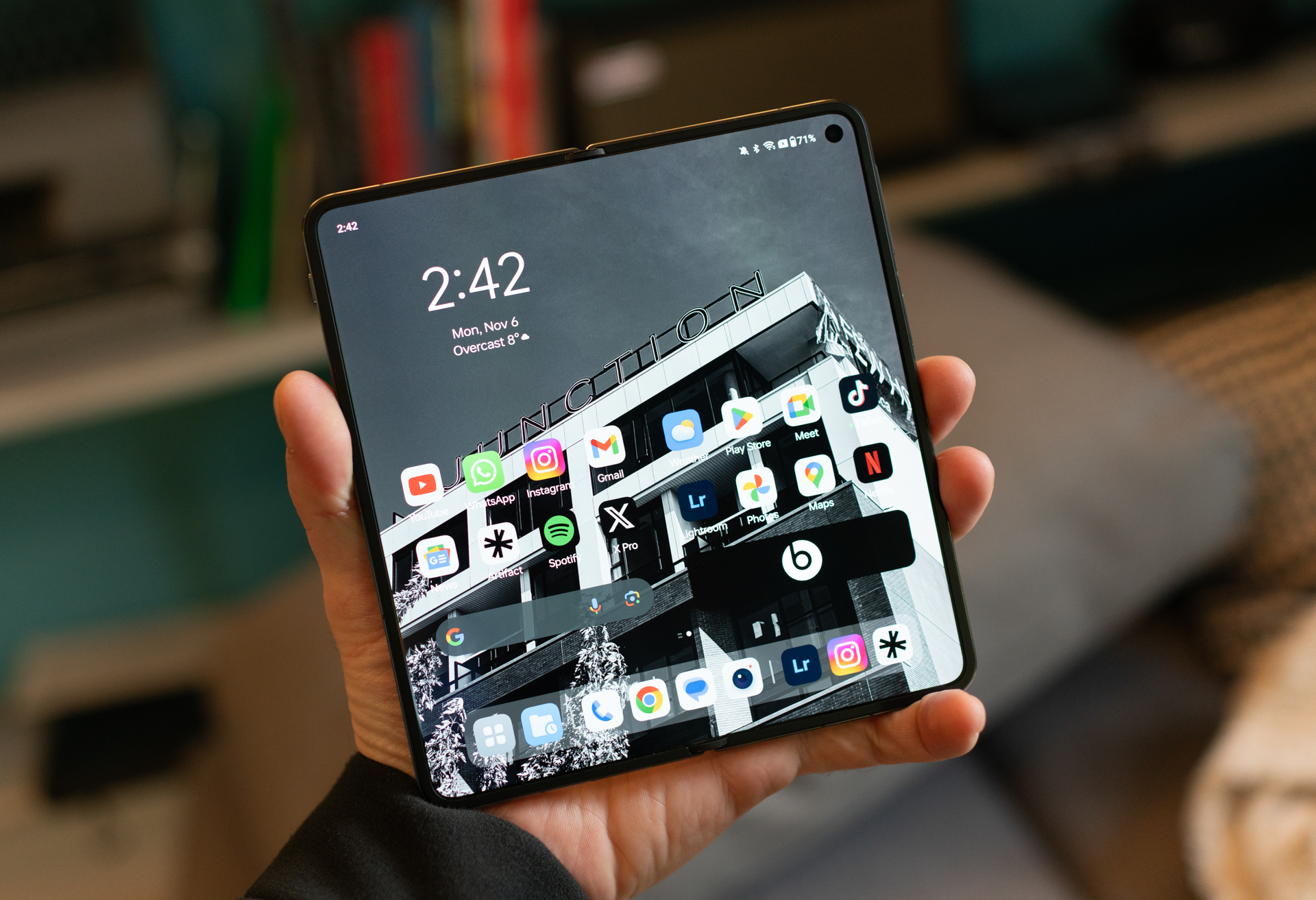Apple, it’s time to fold
Apple is relatively fresh off its annual iPhone refresh, having just released the iPhone 15 and 15 Pro in September. The hardware updates for this generation are solid and meaningful, but also iterative — meaning the iPhone from this year is very similar, in most meaningful ways, to the iPhone from last year. Meanwhile, Apple’s competition is increasingly investing in alternative form factors to the standard glass rectangle — and folding phones in particular are having a real moment.
The real watershed moment for foldable phones for me is the arrival of the terrific OnePlus Open, which just launched to a very positive critical reception among YouTubers and reviewers. The OnePlus Open manages to address a lot of the minor annoyances and failings of other premium folding smartphones out there on the market — and does so on a debut device for a company with a reputation for quality at a fair price. You could argue that the OnePlus Open is a bit too expensive for the company’s existing rep, but it’s hard to argue with how fantastic the hardware and software both are.
The OnePlus Open joins a number of mature, excellent options, as well as some very strong fledgling contenders, including the Samsung Galaxy Fold 5 and the Google Pixel Fold. I’ve had the chance to spend some time with both of the latter recently, and my time with those, along with the very strong reception to the OnePlus Open out the gate, led me to switch to that new foldable as my own personal device for daily use, away from the iPhone 15 Pro Max.
Yes, I’m actually going to switch platforms, after a long, long time as an iPhone user — and the thing that’s getting me to take a walk on the wild (read: Android) side is something I would’ve called a gimmick just a couple short years ago: A foldy screen.
The folding display genuinely now seems to have overcome its novelty value and crossed over into a genuine utility feature. I definitely used it a ton in my first few days of ownership of the OnePlus Open, and I’ve seen firsthand the interest and appreciation it garners from others, too. All of my family members have been wowed by it, and more than a few have noted that using something like that would obviate the need to own both an iPhone and an iPad, as many of them do.
Therein might lie one of the reasons Apple hasn’t seemed interested in diving into this category: It’s basically the only consumer device company out there with a really viable tablet business, and as such it may be less interested than its Android-focused rivals on potentially cannibalizing sales across its product lines.
Apple has also always exhibited a healthy skepticism when it comes to adopting new industry trends, and the company has rightly built a reputation as seldom being a first-mover, but almost always being the company that comes along to turn a good idea into something executed at the right level to spur mass adoption.
This has historically worked very well for the iPhone-maker, but it does occasionally leave the company looking a bit flat-footed or behind when competitors spend considerable time and attention iterating on some experiment and ushering it to a mature state. Samsung has essentially done that work with the Fold lineup, to the point where it received a healthy dose of criticism for essentially leaving its approach to folding phones more or less unchanged between generation 4 and 5.
OnePlus, meanwhile, hasn’t actually just come out of nowhere from behind to perfect the form factor and take the crown: Its hardware is actually pretty much a rebadged version of parent company OPPO’s Find N3, which is the third iteration of that company’s foldable design. The fact remains though that it’s still something Apple hasn’t even touched, unless it’s doing so in its labs and is already multiple iterations deep in unreleased test hardware, which is certainly possible.
Wherever it is in its development cycle, one thing is becoming clear — Apple needs to fold, and fold fast. The company is of course still selling obscene amounts of hardware, and the iPhone 15 is doing at least good, if not at the level of some of its really revolutionary releases for the smartphone. But a perceived lack of innovation when it comes to design fundamentals won’t show in the results near-term; rather, they’ll reveal themselves gradually, like a live wallpaper blossoming while you unfold your smartphone’s display to reveal a much larger, more expansive inner surface.


